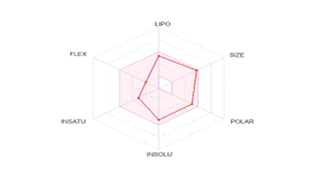Elucidation of Mechanism of Anti-Alzheimer activity of Andrographolide and design of new Anti-Alzheimer compounds using Insilco approach
DOI:
https://doi.org/10.5530/ctbp.2023.4s.86Keywords:
Andrographolide, Analogues, Alzheimer's disease, Molecular dockingAbstract
Alzheimer's disease is a degenerative neurological disease that was discovered and named over a century ago. There are currently more than 20 million people with Alzheimer's disease worldwide, but unfortunately, due to the complexity of the causative mechanisms, there is still no accurate research conclusion on the causes of Alzheimer's disease. Andrographolide, the main active ingredient of the natural plant Andrographis paniculata, has shown good potential as a traditional anti-inflammatory drug for the treatment of Alzheimer's disease and in the field of neuroprotection. Therefore, it is necessary to explore the potential targets for the anti-Alzheimer's activity of andrographolide, including through molecular docking, and in turn to explore the potential of andrographolide and its derivatives as therapeutic agents for Alzheimer's disease.



